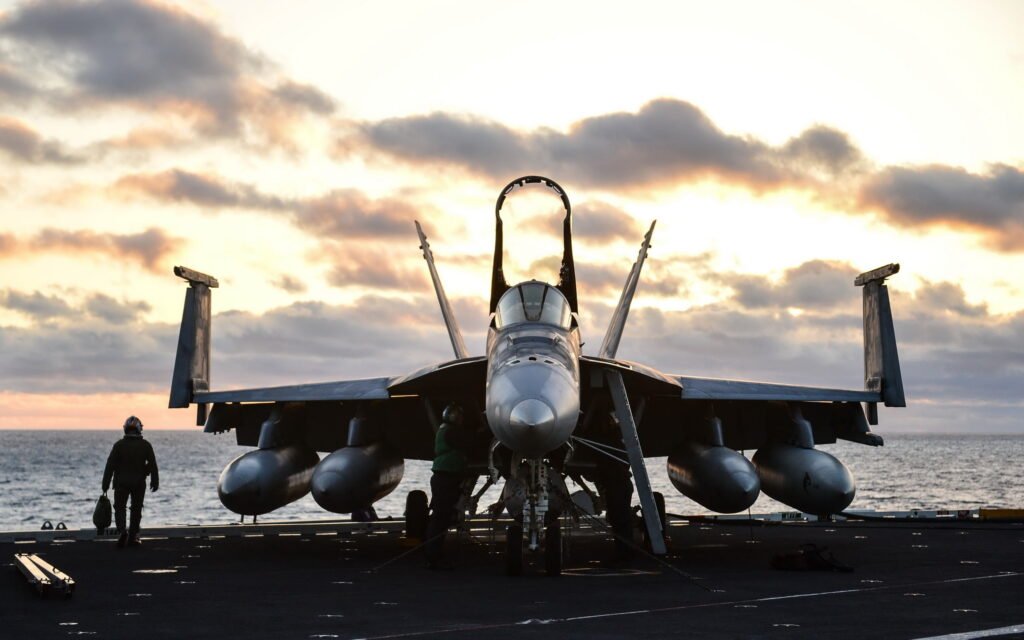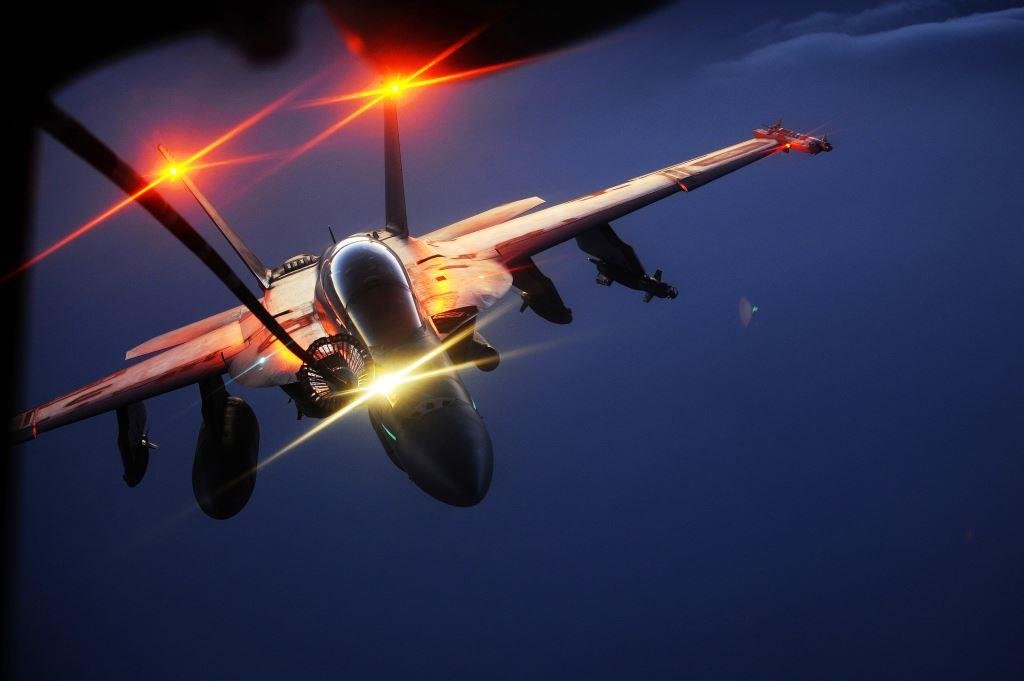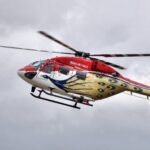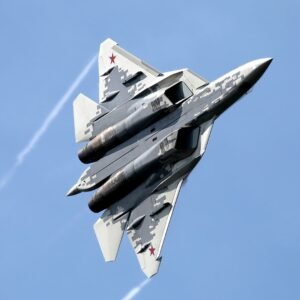I. Introduction

A. The Origin of the Boeing F/A-18 Super Hornet
The origin of the Boeing F/A-18 Super Hornet can be traced back to the 1970s when the US Navy began to explore the idea of developing a new fighter aircraft to replace its aging fleet of F-4 Phantom and A-7 Corsair II jets. The Navy’s requirements for the new aircraft included increased range and payload capacity, as well as advanced avionics and sensor systems.
In response to the Navy’s requirements, McDonnell Douglas (which later merged with Boeing) proposed a new aircraft design that was based on its existing F/A-18 Hornet fighter. The new design, which was designated the F/A-18E/F, featured a number of significant changes and improvements over the current Hornet.
The F/A-18E/F was designed to be a larger and more capable aircraft than the Hornet, with a longer fuselage, more giant wings, and more powerful engines. It was also equipped with advanced avionics and sensor systems, including a new radar system and a digital flight control system.
B. Production of More Units For Testing
The first prototypes of the F/A-18E/F, which were designated the YF-18E/F, were built and flown in the mid-1990s. The YF-18E was a single-seat version of the aircraft, while the YF-18F was a two-seat version. These prototypes underwent extensive testing and evaluation, and their performance and capabilities were found to be significantly superior to those of the existing Hornet.
Following the successful testing and evaluation of the YF-18E/F prototypes, the US Navy awarded a production contract to McDonnell Douglas (which was acquired by Boeing in 1997) to build the new Super Hornet. The first production version of the aircraft designated the F/A-18E/F Block I, entered service with the US Navy in 1999 and has been in use ever since.

Today, the Boeing F/A-18 Super Hornet is one of the primary fighter aircraft in the US Navy’s fleet, and it has also been exported to several other countries, including Australia, Canada, and Kuwait. The Super Hornet is widely regarded as one of the most capable and versatile fighter aircraft in the world, with a wide range of mission capabilities and the ability to operate from aircraft carriers and land bases.
II. Design and Development
The design and development of the Boeing F/A-18 Super Hornet began in the late 1980s, as the US Navy sought a successor to the aging F-14 Tomcat and F/A-18 Hornet aircraft. The Super Hornet was designed to be a more capable and advanced aircraft, with increased range, payload, and mission flexibility.
The design process began with a set of requirements issued by the US Navy in 1987. These requirements called for an aircraft that could perform a wide range of missions, including air superiority, close air support, and strike missions. The aircraft was also required to have a longer range and a larger payload than the existing F/A-18 Hornet.

Boeing’s design team began work on the Super Hornet in 1988, with the goal of developing an aircraft that could meet the Navy’s requirements while also incorporating the latest technology and design features. The team focused on developing an aircraft with a larger wing area and more powerful engines, as well as advanced avionics and sensor systems.
A. Performance Capabilities of The Boeing F/A-18 Super Hornet
The Boeing F/A-18 Super Hornet is powered by two General Electric F414-GE-400 turbofan engines, which provide a maximum thrust of 22,000 pounds each. This allows the aircraft to achieve a maximum speed of Mach 1.8 and a combat radius of over 400 miles. The Super Hornet also has an impressive climb rate of 44,882 feet per minute, making it highly maneuverable and agile in combat situations.
Another key performance capability of the Super Hornet is its ability to carry a wide range of weapons. The aircraft has 11 weapon stations, including two wingtip stations, and can carry a combination of air-to-air and air-to-ground missiles, bombs, and rockets. The Super Hornet can also be equipped with a 20mm M61 Vulcan cannon, which can fire up to 6,000 rounds per minute.
1. General Specification of The Boeing F/A18 Super Hornet Fighter Jet
| Specification | Value |
| Crew | 1-2 |
| Length | 60 ft 1 in (18.31 m) |
| Wingspan | 44 ft 8 in (13.62 m) |
| Height | 16 ft (4.88 m) |
| Empty weight | 32,081 lb (14,552 kg) |
| Max takeoff weight | 66,000 lb (29,937 kg) |
| Fuel capacity | 13,500 lb (6,120 kg) |
| Powerplant | 2 x General Electric F414-GE-400 turbofans |
| Thrust | 22,000 lbf (97.9 kN) each |
| Max speed | Mach 1.8 (1,190 mph, 1,915 km/h) |
| Range | 1,275 nmi (2,346 km) |
| Combat radius | 390 nmi (449 mi, 722 km) |
| Service ceiling | 50,000 ft (15,240 m) |
2. F/A 18 Super Hornet:- Armaments
The Boeing F/A-18 Super Hornet is a highly capable fighter aircraft that is designed to perform a wide range of mission types, including air-to-air combat, air-to-ground attacks, and electronic warfare. As such, it is equipped with a variety of different weapons and munitions to suit these different mission types. Here are some of the armaments that the Super Hornet is capable of carrying:

- Guns: The Super Hornet is equipped with an M61A1 20mm Gatling-style cannon, which is capable of firing up to 6,000 rounds per minute. The cannon is mounted in the nose of the aircraft and is primarily used for air-to-air combat.
- Missiles: The Super Hornet can carry a variety of different air-to-air and air-to-ground missiles, including the AIM-9 Sidewinder, AIM-120 AMRAAM, and AGM-88 HARM. These missiles are typically guided by the aircraft’s radar or other sensors and can be used to engage targets at long ranges.
- Bombs: The Super Hornet is also capable of carrying a wide range of different bombs and other munitions, including laser-guided and GPS-guided bombs, as well as unguided bombs and rockets. These weapons are typically used for air-to-ground attacks and can be used to strike a wide range of different targets.
- Fuel tanks: The Super Hornet can also be equipped with external fuel tanks, which can increase the aircraft’s range and allow it to stay airborne for longer periods of time.
- Electronic warfare systems: In addition to its weapons and munitions, the Super Hornet is also equipped with advanced electronic warfare systems, including jammers and decoys. These systems are designed to protect the aircraft from enemy electronic attacks and can be used to disrupt or neutralize enemy radar and communication systems.

3. F/A 18 Super Hornet:- Advanced Avionics
The Boeing F/A-18 Super Hornet is equipped with a range of advanced avionics and sensor systems that enable it to perform a wide variety of mission types.
- AN/APG-79 Active Electronically Scanned Array (AESA) radar: The Super Hornet is equipped with a powerful AESA radar system that is capable of detecting and tracking multiple targets simultaneously, even in challenging environments. The radar can also be used to provide high-resolution ground mapping and to detect and track other aircraft at long ranges.
- Infrared Search and Track (IRST) system: The Super Hornet is also equipped with an IRST system that enables it to detect and track targets using their heat signatures. The IRST system is particularly useful for detecting and tracking targets that are difficult to detect with radar, such as stealth aircraft.
- Electronic warfare systems: The Super Hornet is equipped with a range of electronic warfare systems, including jammers and decoys, that are designed to protect the aircraft from enemy electronic attacks. These systems can be used to disrupt or neutralize enemy radar and communication systems and to prevent the aircraft from being detected by enemy sensors.
- Helmet-mounted display: The Super Hornet is equipped with a helmet-mounted display system that enables the pilot to see the critical flight and targeting information directly in their field of view. The display is linked to the aircraft’s sensors and can be used to cue weapons and provide situational awareness.
- Digital flight control system: The Super Hornet is also equipped with a digital flight control system that enables the aircraft to fly more smoothly and efficiently than traditional analog systems. The system can also be used to reduce pilot workload and enable the aircraft to fly in more challenging environments.

III. Operational History
The Boeing F/A-18 Super Hornet has been deployed in numerous combat missions across the globe, including in Iraq, Syria, and Afghanistan. The aircraft has been used for a wide range of missions, including air superiority, close air support, and strike missions. In addition to its combat capabilities, the Super Hornet has also been used for humanitarian missions, including disaster relief operations in the aftermath of hurricanes and earthquakes.
One of the most notable features of the Super Hornet is its ability to be quickly reconfigured for different mission types. This has made it a highly versatile aircraft that can be used for a wide range of missions. The aircraft’s performance capabilities, combined with its advanced avionics and cockpit, make it a formidable opponent in combat situations.
IV. Prototypes and Variants of The Boeing F/A-18 Super Hornet
A. Prototypes:-
1. YF-18E/F (1988):
The first Super Hornet prototypes were designated the YF-18E/F. The YF-18E was a single-seat version of the aircraft, while the YF-18F was a two-seat version. These prototypes were built and flown in 1995, with the YF-18E flying in November of that year, and the YF-18F flying in December.
2. F/A-18E/F Block I (1995):
The initial production version of the Super Hornet was designated the F/A-18E/F Block I. This version featured a larger wing area than the F/A-18 Hornet, as well as more powerful engines and advanced avionics and sensor systems. The Block I Super Hornet entered service with the US Navy in 1999.
3. F/A-18E/F Block II (2005):
The Block II version of the Super Hornet featured a number of upgrades and improvements, including the addition of conformal fuel tanks, improved mission computers, and advanced electronic warfare and radar systems. The Block II Super Hornet entered service with the US Navy in 2005.

4. F/A-18E/F Block III (2020):
The latest version of the Super Hornet is the Block III, which features a number of enhancements over previous versions, including enhanced stealth capabilities, increased range, and advanced avionics and sensors. The Block III Super Hornet is currently undergoing testing and is expected to enter service with the US Navy in the coming years.
5. EA-18G Growler (2006):
The EA-18G Growler is a variant of the Super Hornet that is designed for electronic warfare missions. The aircraft is equipped with advanced jamming and electronic attack systems, as well as a suite of sensors and avionics designed to detect and neutralize enemy electronic systems. The EA-18G entered service with the US Navy in 2009.
B. Variants
1. F/A-18E/F Block I (1999):
The Block I Super Hornet was the first production version of the aircraft and featured a number of upgrades and improvements over the F/A-18 Hornet. These included a larger wing area, more powerful engines, and advanced avionics and sensor systems. The Block I Super Hornet entered service with the US Navy in 1999 and is still in use today.
2. F/A-18E/F Block II (2005):
The Block II Super Hornet was introduced in 2005 and featured a number of upgrades over the Block I version. These included conformal fuel tanks, which increased the aircraft’s range, improved mission computers, and advanced electronic warfare and radar systems. The Block II Super Hornet has been in service with the US Navy since 2005.

3. EA-18G Growler (2009):
The EA-18G Growler is a specialized variant of the Super Hornet that is designed for electronic warfare missions. The aircraft is equipped with advanced jamming and electronic attack systems, as well as a suite of sensors and avionics designed to detect and neutralize enemy electronic systems. The Growler entered service with the US Navy in 2009 and is currently in use.
4. Advanced Super Hornet (2013):
The Advanced Super Hornet is a proposed upgrade to the existing Super Hornet fleet that would include a number of enhancements to the aircraft’s capabilities. These would include improved engines, conformal fuel tanks, and advanced avionics and sensors. The Advanced Super Hornet is still in the development phase and has not yet entered service.
5. F/A-18E/F Block III (2020):
The Block III Super Hornet is the latest version of the aircraft and features a number of enhancements over previous versions. These include enhanced stealth capabilities, increased range, and advanced avionics and sensors. The Block III Super Hornet is currently undergoing testing and is expected to enter service with the US Navy in the coming years.

Conclusion
the Boeing F/A-18 Super Hornet is a superior multirole fighter aircraft that has been extensively upgraded to provide maximum performance capabilities and mission effectiveness. Its advanced avionics and cockpit, combined with its ability to carry a wide range of weapons and be quickly reconfigured for different mission types, make it a highly versatile and effective aircraft. Its operational history and ongoing upgrades demonstrate its reliability and effectiveness, and it is likely to remain a key aircraft in the arsenals of the US Navy and its allies for years to come.
Read More:- F22 Raptor Fighter Jet and Sukhoi SU-57 Fighter Jet.













